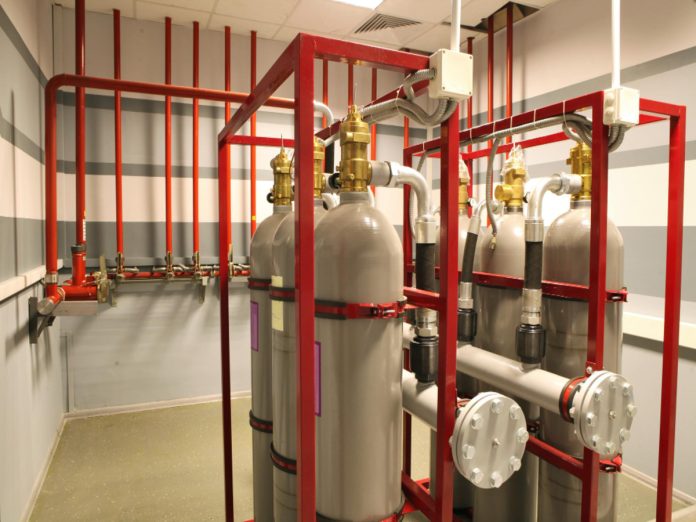In a world where safety is paramount, fire protection systems play a pivotal role in safeguarding lives and property. Fires can wreak havoc in a matter of minutes, causing irreparable damage and posing significant threats to human life. The implementation of robust fire protection systems has become essential in residential, commercial, and industrial settings to mitigate the devastating impact of fires. This article explores the various components, types, and advancements in fire protection systems, highlighting their critical importance in ensuring the safety and well-being of individuals and communities.
The Importance of Fire Protection Systems:
Preserving Life and Property:
Fire protection systems are designed with the primary goal of preserving life and property. Whether in residential buildings, offices, or industrial complexes, these systems act as the first line of defense against the destructive force of fires. Early detection, containment, and suppression are critical aspects that can prevent a small incident from escalating into a full-blown catastrophe.
Code Compliance and Regulations:
Governments and regulatory bodies around the world have established stringent fire safety codes and regulations. Adhering to these codes is not only a legal requirement but also a moral obligation to ensure the well-being of occupants and the surrounding environment. Fire protection systems are designed and installed to meet these standards, providing a comprehensive and systematic approach to fire safety.
Components of Fire Protection Systems:
Fire Detection Systems:
Early detection is crucial in preventing the spread of fires. Modern fire detection systems utilize advanced technologies such as smoke detectors, heat sensors, and flame detectors to identify potential fire hazards. These systems can trigger alarms, alerting occupants and emergency services promptly. Integration with building automation systems allows for quick and effective responses.
Fire Suppression Systems:
Fire suppression systems are designed to control or extinguish fires swiftly. Common types include sprinkler systems, gas-based suppression systems, and foam-based systems. Sprinkler systems, for instance, automatically release water in the event of a fire, effectively limiting its growth. Gas-based systems use agents like CO2 or clean agents to suppress fires without causing damage to sensitive equipment.
Emergency Evacuation Systems:
In the event of a fire, a swift and organized evacuation is crucial. Emergency evacuation systems include audible and visual alarms, emergency lighting, and exit signs to guide occupants to safety. These systems are often integrated with fire detection systems to ensure a coordinated response.
Passive Fire Protection:
Passive fire protection measures are designed to contain fires within specific areas, limiting their spread. Fire-resistant materials, fire doors, and fire-rated walls are examples of passive fire protection. These components create barriers that slow down the progression of flames and provide additional time for evacuation and intervention.
Types of Fire Protection Systems:
Water-Based Systems:
Water-based fire protection systems, such as sprinklers, remain one of the most common and effective methods of fire suppression. These systems are reliable, cost-effective, and suitable for a wide range of applications. Advances in technology have led to the development of high-pressure water mist systems that offer enhanced suppression capabilities while minimizing water damage.
Gas-Based Systems:
Gas-based suppression systems utilize agents like CO2, FM-200, and inert gases to extinguish fires by reducing oxygen levels. These systems are particularly valuable in settings where water-based systems may cause damage to sensitive equipment, such as data centers and museums. The quick response and minimal cleanup make gas-based systems an attractive choice for certain applications.
Foam-Based Systems:
Foam-based systems are effective in suppressing flammable liquid fires. These systems discharge a foam blanket that suppresses vapors and cools the fuel surface. They are commonly using in industrial settings, such as chemical plants and petroleum refineries, where the risk of flammable liquid fires is higher.
Advancements in Fire Protection Systems:
Smart and Integrated Systems:
The integration of smart technologies has revolutionized fire protection systems. Advanced sensors, artificial intelligence, and machine learning algorithms enable systems to analyze data in real-time, enhancing the accuracy of fire detection and reducing false alarms. Integration with building management systems allows for centralized monitoring and control.
Remote Monitoring and Control:
Remote monitoring capabilities have become a standard feature in modern fire protection systems. Building managers and emergency responders can remotely access system data, receive real-time alerts, and even control certain aspects of the system from a centralized location. This capability improves response times and ensures timely intervention.
Fire-resistant Materials and Technologies:
Ongoing research and development efforts focus on creating more advanced fire-resistant materials. From innovative building materials to fire-resistant coatings, these advancements contribute to the overall resilience of structures. Additionally, technologies like fire-resistant glass provide transparent barriers that maintain visibility while offering protection against flames and heat.
Automatic Fire Extinguishing Drones:
The emergence of drone technology has introduced new possibilities for fire protection. Automatic fire extinguishing drones equipped with fire suppressants can navigate through hazardous environments to combat fires swiftly and efficiently. These drones are particularly valuable in situations where human intervention is challenging or dangerous.
Conclusion:
Fire protection systems are the unsung heroes that silently stand guard, ready to respond in the face of danger. From early detection to rapid suppression and evacuation, these systems play a critical role in safeguarding lives and property. As technology continues to advance, the integration of smart systems and innovative materials further enhances the effectiveness of fire protection measures. It is imperative for individuals, businesses, and communities to prioritize the implementation of robust fire protection systems, not only to meet regulatory requirements but to create a safer and more resilient environment for all.
This article is posted on TechMillioner.

